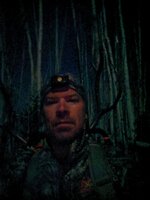Say you put an elk down as the sun was setting.. shot was fatal. If you were unable to break down the animal until the morning, how cold would it have to be for all the meat to still be good by the next morning?
Say you were able to gut the animal but needed to wait until first light to break it down?
I've done that with a couple deer, one bull elk and one moose.
With deer I gut them, split the pelvis and rib cage, lay it on it’s back, put a couple rocks or sticks under it, split the hide on the inside of the hams, almost remove both shoulders and split that hide too. Skin some of the hide down each side of the neck. Pretty much expose meat facing the sky. 35 or below they have been fine. If it is not going to freeze or be close to it, say 42-44 max, I cut into the ham to the bone and open that all up. Never tried it when any warmer. Piss a circle around the carcass and leave a sweaty shirt or two there too. Seems to help keep coyotes away, so far.
With the bull elk and moose, one of each, below 35 in both cases. Same routine. But not so easy to get air under them, so skin the neck/hams/shoulders more. Not sure I’d try it with one unless freezing or very close to it.
I did make the mistake of leaving a gutted deer overnight when 10 below. Just gutted it, layed him over a log, none of the other stuff. Had to saw off the legs to fit the frozen thing in my pickup bed. Ford Ranger with a cab high canopy, was lucky to have a good saw with me. Was my first experience with hunting when that cold, lesson learned.
Meat was just fine in all cases. But it's not something I seek to do. It’s more of matter of terrain and help. If I had to, I was prepared to fully quarter and bone it out if necessary, then recover meat the next morning. Our last bull was killed in Nov, in a real bad spot at dark. Low 30’s at the time, we had motivated young help, and got him out in pieces by 1am.

